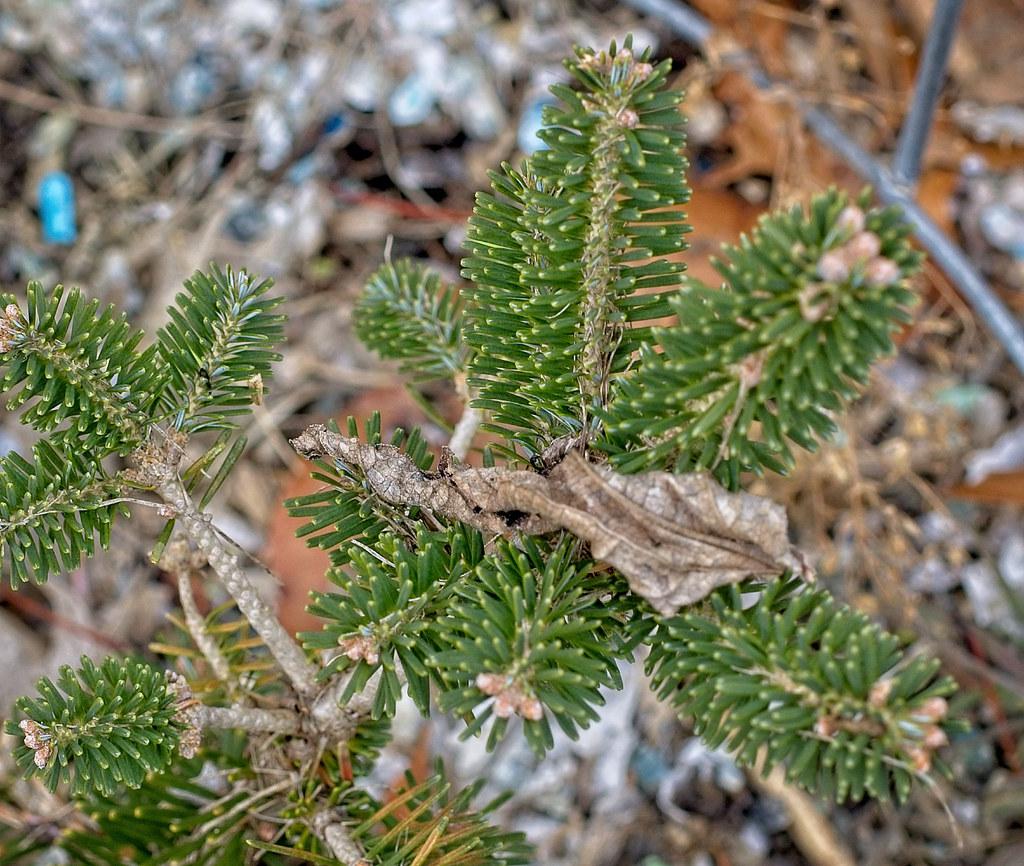

Alpine Fir (Abies lasiocarpa)
Also known as: Abies lasiocarpa, Subalpine Fir, Rocky Mountain Fir.
The Alpine Fir, scientifically known as Abies lasiocarpa, is an amazing conifer native to western North America. Its stiff, dense needles bring vivid color year-round and its pyramidal growth habit adds texture and interest to any landscape. With its tolerance to a variety of soils and conditions, this evergreen is both versatile and visually striking. Its branches reach out and cast a unique evergreen form of showy clouds. Through years of growth, it develops a sturdy trunk and crooked branches that are quite striking. Alpine Fir also provides winter cover and shelter for wildlife. Its dense needles are an ideal refuge from cold and precipitation. Its strong branches and trunk also provide perching points for nesting birds. Alpine Fir is truly one of nature’s most diverse and visually stunning plants.
Interesting facts about the Alpine Fir:
- High Elevation Specialist: The Alpine Fir is native to the high mountains of Western North America. It thrives at elevations typically ranging from 2,900 to 3,500 meters (9,500 to 11,500 feet), often in subalpine and alpine environments, which is higher than most other fir species.
- Narrow, Spire-like Growth: Characterized by its narrow, spire-like shape, the Alpine Fir has a very conical form with a slender and straight trunk. This growth habit allows it to thrive in the dense, snowy environments of high mountain regions.
- Short, Dense Needles: The needles of the Alpine Fir are short, typically around 1 to 3 cm long, and are densely packed around the branches. They are flat and have a distinct bluish-green color with two white bands on the underside, which is a common trait among firs.
- Slow Growth and Longevity: Alpine Firs are slow-growing trees but can live for several hundred years in their harsh natural habitats. Some individuals are known to be over 400 years old.
- Adaptation to Harsh Conditions: The tree is well-adapted to survive in extreme conditions, including heavy snowfall, strong winds, and cold temperatures. Its tapered shape and flexible branches help it shed snow and avoid damage from heavy snow loads.
- Cylindrical Cones: The cones of the Alpine Fir are unique among firs. They are cylindrical, upright, and grow at the top of the tree. The cones disintegrate while still on the tree to release their seeds, a feature typical of firs.
- Ecological Importance: In its natural habitat, the Alpine Fir is a vital part of the ecosystem. It provides habitat and food for various wildlife species. Its seeds are a food source for birds and small mammals, and its dense foliage offers shelter and protection.
Plant care guide:
Watering
Alpine Fir requires moderate to deep watering and should be watered around once a week during the growing season--generally from late Spring until the end of Summer. Water the pot deeply until water comes out of the pot's bottom drainage holes to ensure the entire root system has been adequately soaked. Do not water again until the soil feels dry to the touch, about an inch below the surface. During Fall and Winter, allow the soil to dry out completely before watering.
Pruning
Pruning an alpine fir is best done in the late winter or early spring just before new growth begins. Prune away dead and crossing branches as needed and selectively thin out crowded areas. Avoid removing more than 1-third of the foliage as this can stress the tree and reduce health. Doing light pruning over a number of years is the best practice as this allows for a gradual movement of the desired new shape.
Sunlight
The Alpine Fir likes the full sun. For optimal growth, it is recommended to receive approximately 6 to 8 hours of direct sunlight a day. Sunlight should be spread out evenly throughout the day, as too much sun during some parts of the day can cause sunburn and other damages. In more northern climates, it is more tolerant of lower light levels, but may not achieve ideal growth with less than 4 to 6 hours of direct sunlight.
Plant information:
- Family: Pinaceae
- Type: Tree
- Height: ~21.34 meters
- Cycle: Perennial
- Growth Rate: Low
-
Anatomy:
- Leaves: green
- Buds: brown
- Twig: silver-brown
- Bristles: green
- Twigs: silver-brown, brown
- Needles: green
- Trunk: green-silver, dark-brown
- Branches: brown
- Trunks: light-gray
- Care Level: Medium
-
Watering:
- Average
- Every 7-10 days
- Sunlight requirement: full sun, part shade
- Pruning:
- February, March, April
- Propagation: Seed Propagation, Cutting, Grafting Propagation, Layering Propagation, Division
- Soil: Loamy Rocky
- Origin: Canada, United States, Mexico, Guatemala, Honduras, El Salvador, Nicaragua, Costa Rica, Panama
- Seeds: No
- Drought Tolerant: No
- Salt Tolerant: No
- Thorny: No
- Invasive: No
- Tropical: No
- Indoor: No
- Flowers: Yes
- Cones: Yes
- Fruits: No
- Edible Fruit: No
- Leaf: Yes
- Edible Leaf: No
- Cuisine: No
- Medicinal: No
- Poisonous to Humans: No
- Poisonous to Pets: No

Sources & more information:
Content is based on public databases such as the KEW Plants of the World database, among others. Please double-check all information. "About Plants" does not take responsibility for any inaccuracies.
